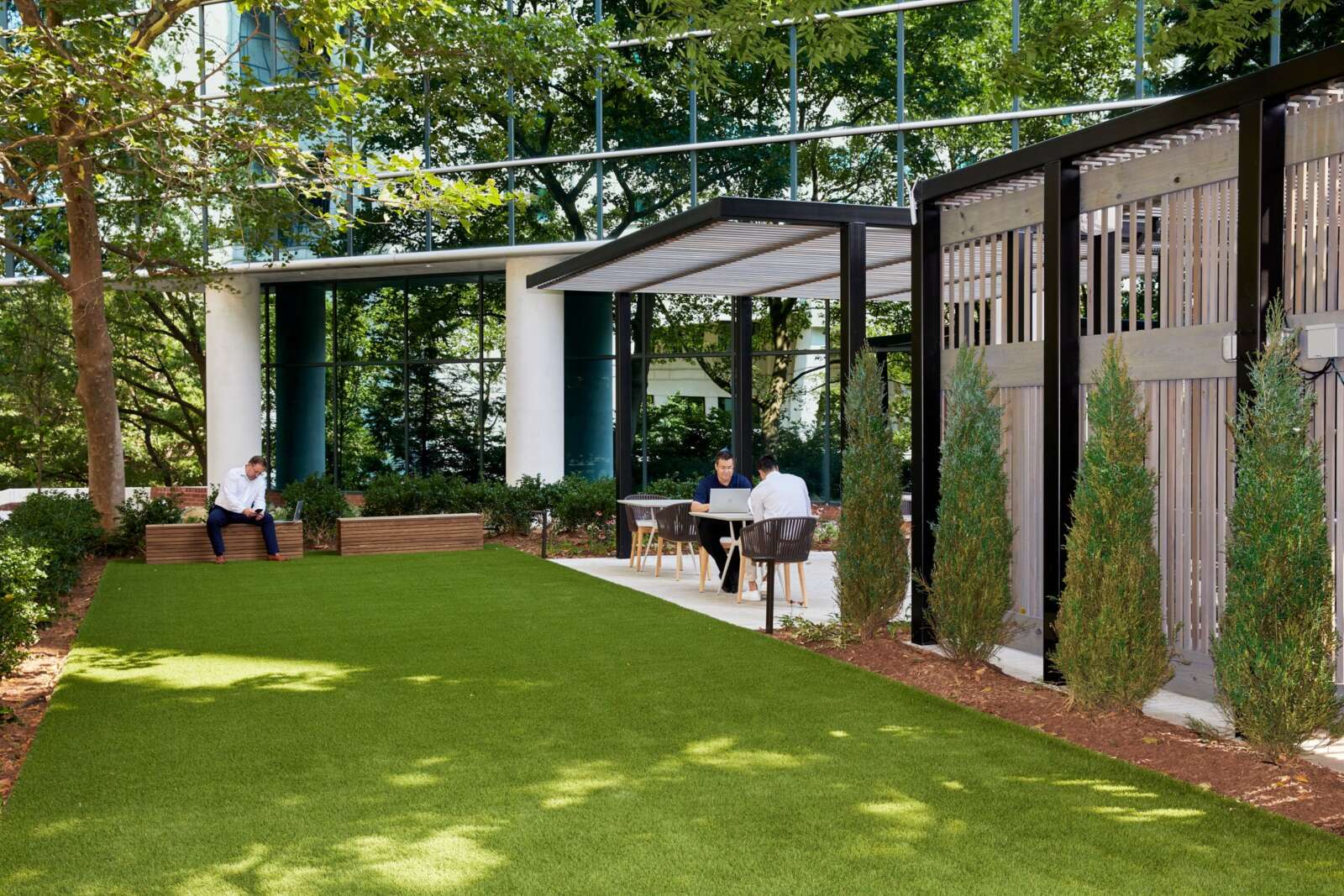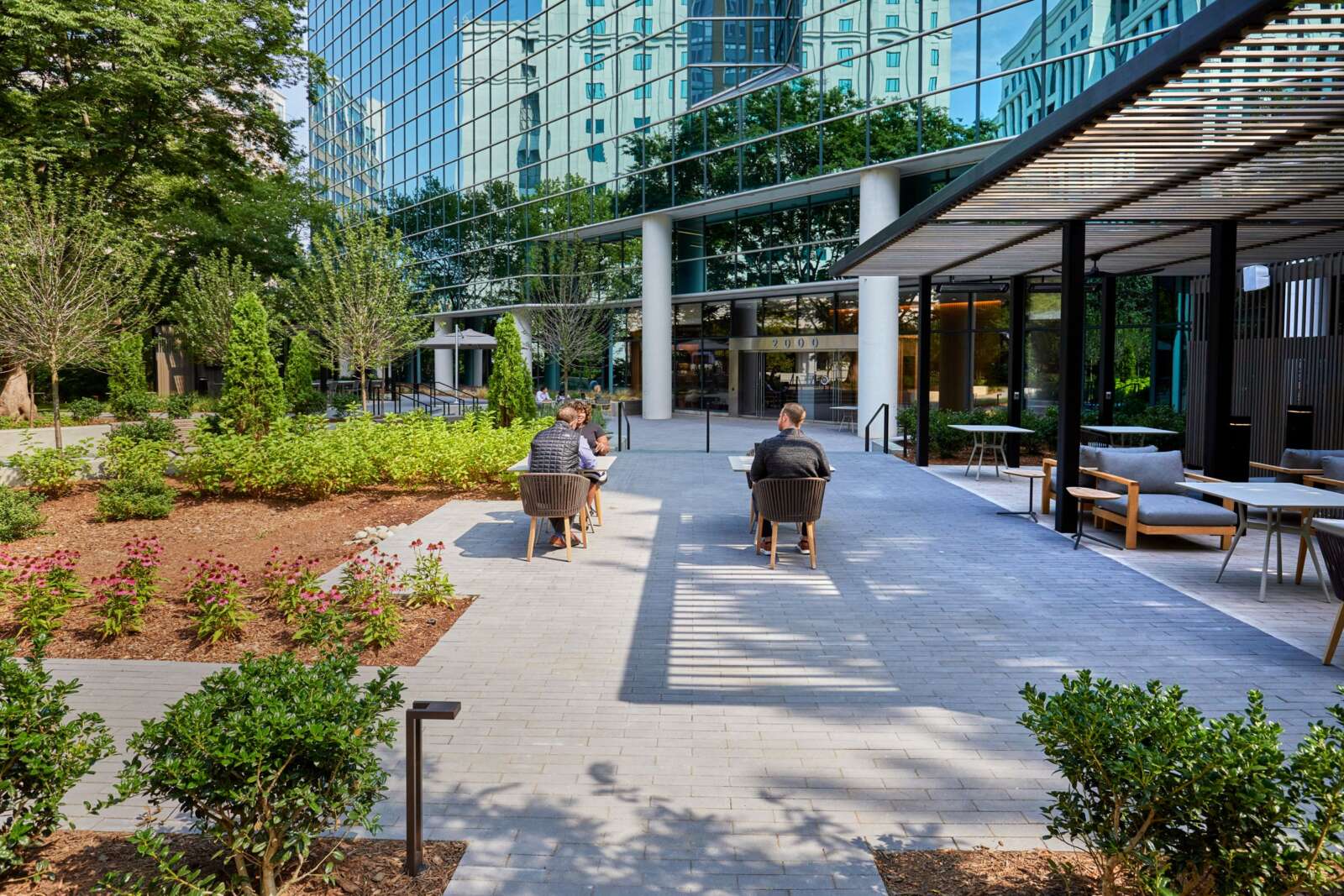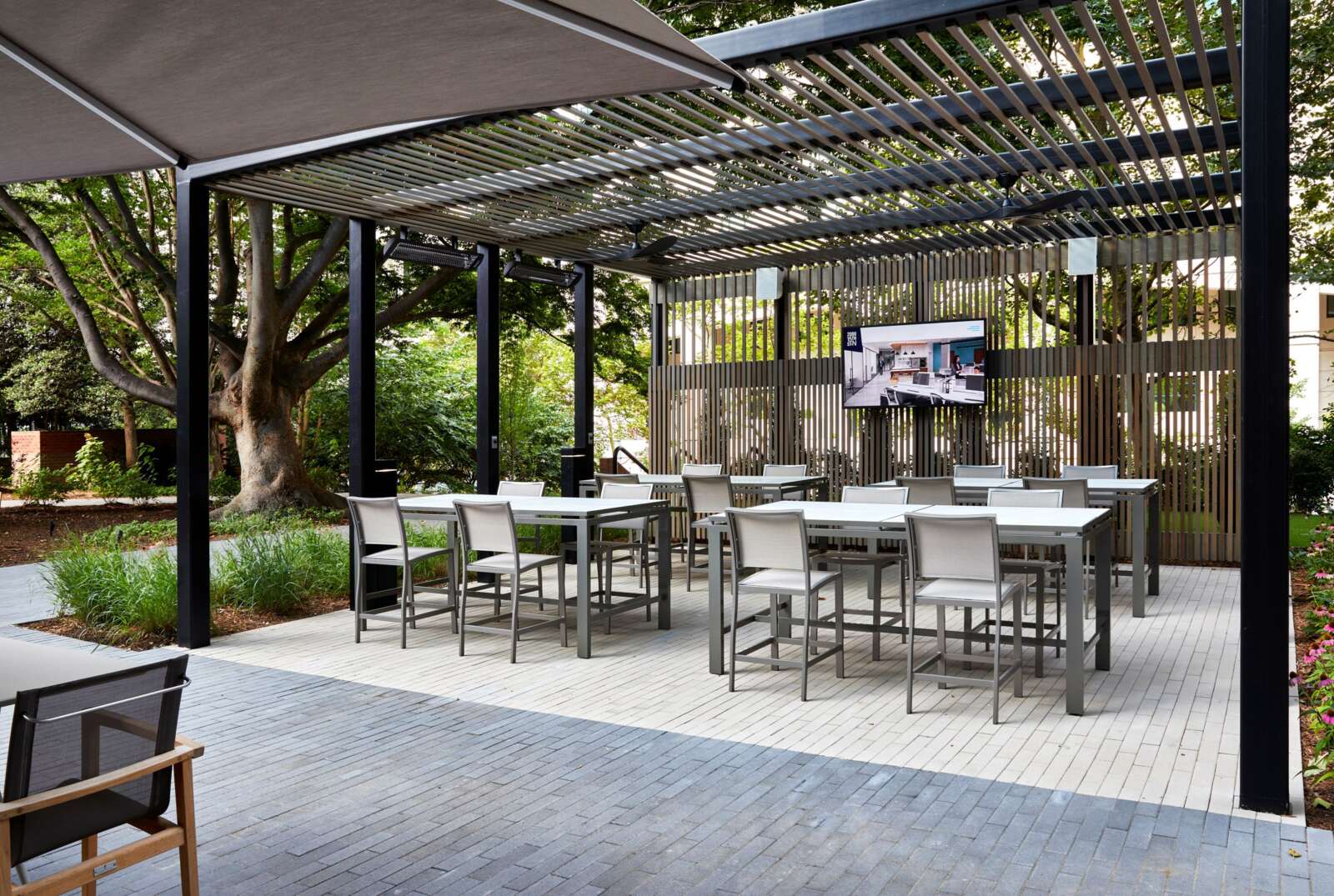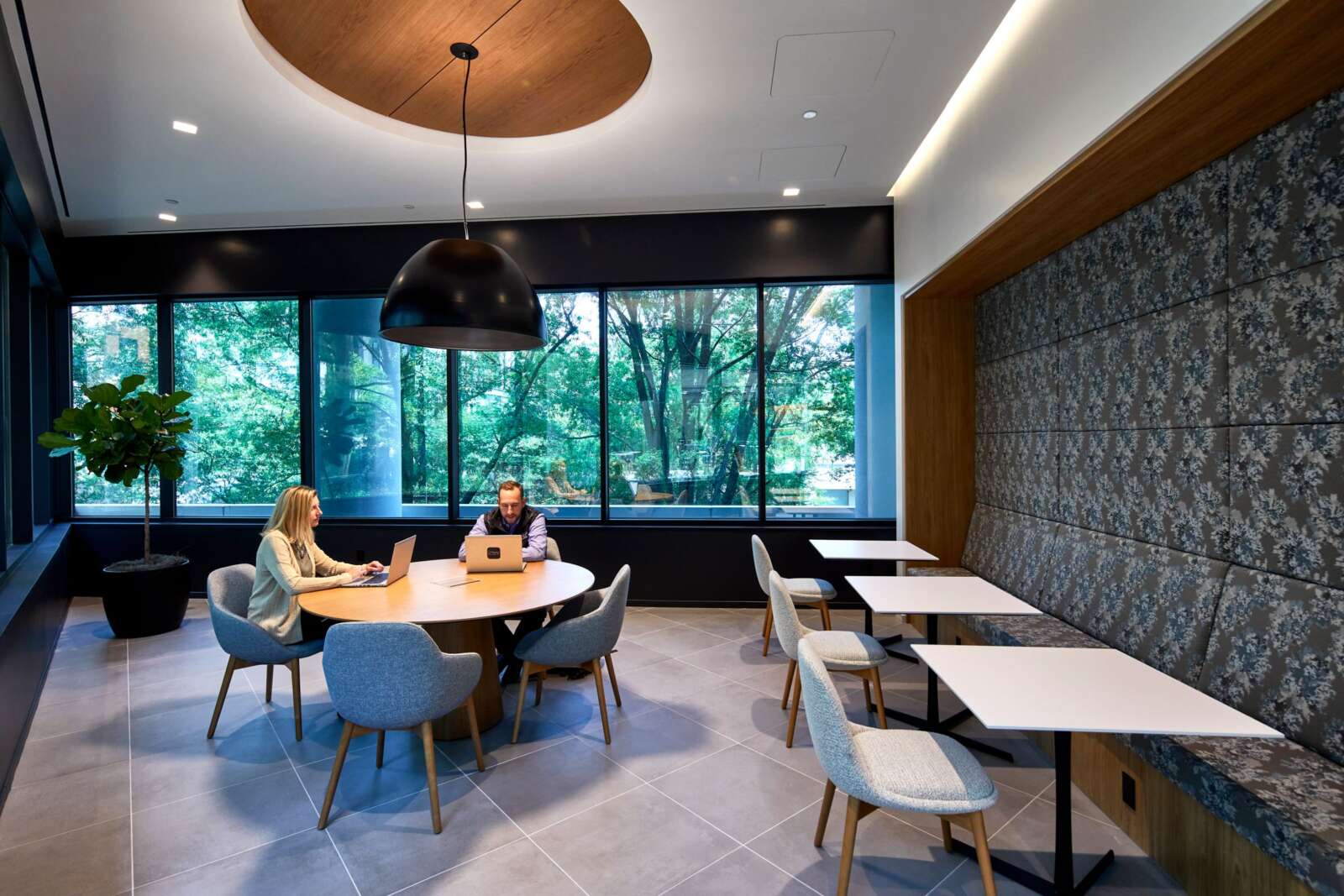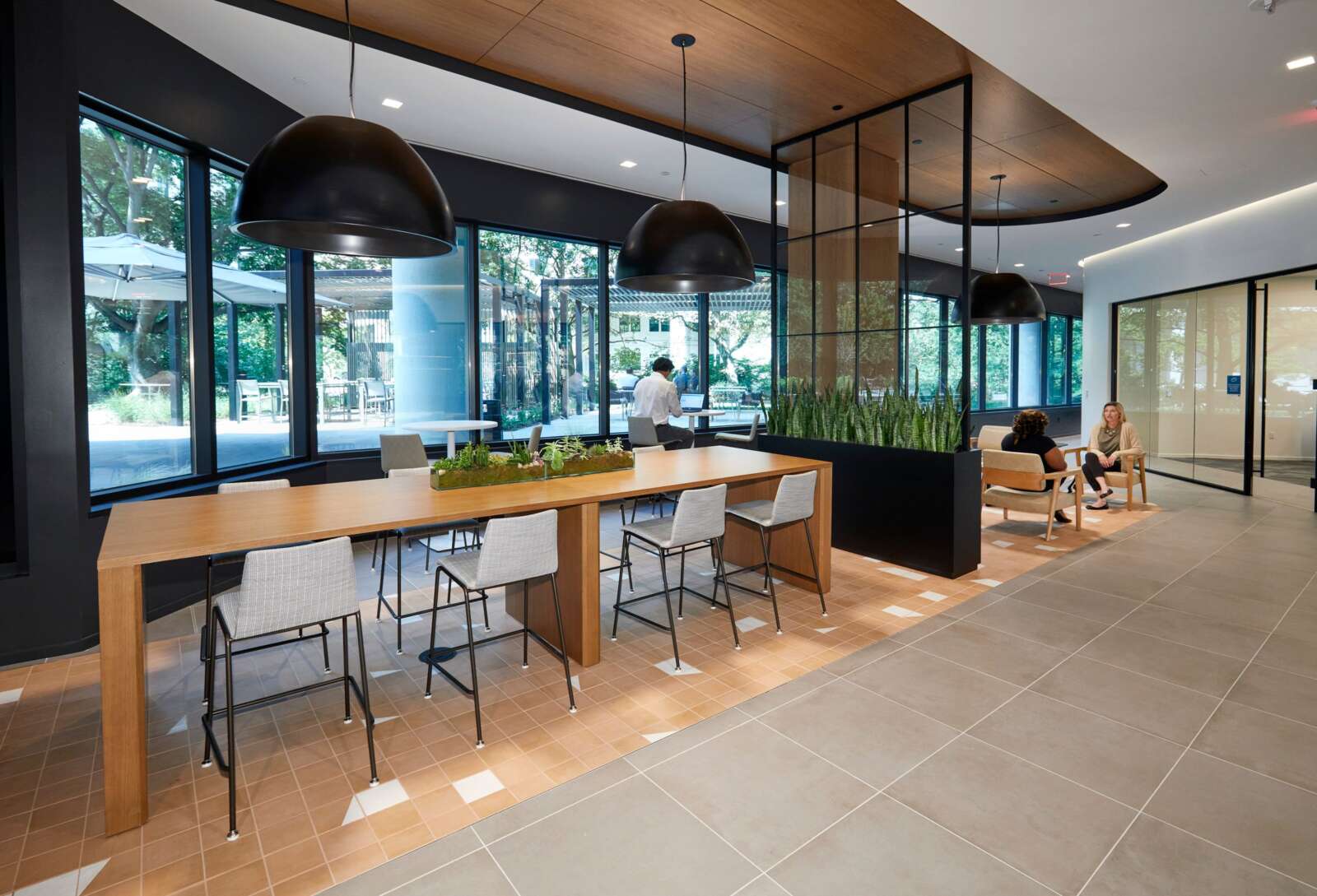The pandemic has moved office work to the home. As at least some of that work moves back to office buildings, the next frontier might be outdoors.
In Arlington, a recently-renovated 1980s office building in Courthouse offers a glimpse of a greener office future, with a year-round outdoor working space.
The new 16,000-square foot landscaped outdoor plaza at 2000 15th Street N. — the centerpiece of a $11 million renovation project — is the largest outdoor plaza of any office building in the Rosslyn-Ballston corridor, according to American Real Estate Partners (AREP).
“The renovated plaza, wired for connectivity, extends the office to the outdoors, offering all-season, year-round use as a work and meeting space, and provides a spectacular backdrop to the indoor conference and amenity spaces, creating an urban oasis,” said Paul Schulman, AREP’s Principal and Chief Operating Officer.
The group says the renovation will help tenants coax employees back to the office with new experiences and stronger health features, such as air filters and purifiers. Experts say such projects are the latest examples of how incorporating natural elements into built environments can improve employees’ health while promoting environmental stewardship.
COVID-19 has altered many people’s work and personal habits, and these changes are likely to stick around, according to a Post-Schar poll released this summer. Three-quarters of respondents said they’ll spend more time outside, two-thirds said they’d wear comfortable clothing more often, and nearly 70% said they’d wear a mask when sick.
People and offices are adapting to these behavioral changes, in part, by working outdoors — or by bringing elements of the outdoors inside — and focusing on wellness measures.
During the pandemic, experimental outdoor work spaces popped up in Crystal City and in Rosslyn’s Gateway Park.
Meanwhile, new office projects here boast natural elements — such as Amazon HQ2’s water- and mountain-inspired “Helix” building — and wellness, such as Skanska’s new office project near Quincy Park, which has been recognized for its focus on health and well-being.
The seeds for natural, “biophilic” design elements were planted decades ago, says Dr. Gregory Unruh, an expert on sustainable business strategy in George Mason University’s School of Integrative Studies. It took a pandemic and the right technology to get people to rethink their work environments and to see nature integrated into offices.
“There’s something about us having a connection with the world,” he said. “Before the conversation around ‘biophilia’ existed, there was scientific research that suggested if you give people windows with a view of nature, they tend to be more productive, happier and less sick.”
Other research demonstrated that, without outdoor air circulating in and with the synthetic materials in carpets, paints and cleaning supplies, indoor office spaces had poorer air quality than the outdoors, despite the gas-burning cars and other pollution sources outside.
COVID-19 connected these issues, Unruh says. Building owners outfitted indoor spaces with machines that regularly bring outdoor air inside while people spent more time outdoors.
Although employees and employers realized that remote work could be as productive as in-person work, they still recognized the need for interpersonal collaboration — a need he says the rise of outdoor working spaces will meet.
“These collaborative outdoor spaces are going to play a role,” Unruh said. “These initial experiments we see in Arlington are very encouraging, and I think they enhance the working life and community life of people.”
Integrating nature into workplaces could encourage environmental stewardship among more people, says Elenor Hodges, the Executive Director of EcoAction Arlington.
The biophilic elements at 2000 15th Street N. and other under-construction projects support the environment in addition to workers, she says. Additional trees improve stormwater management and green roofs keep the county cooler.
Particularly in urban areas, she said, strengthening one’s connection to nature is important for encouraging sustainable habits.
“People need to see nature in order to understand the importance of stewarding it,” she said.
She notes that the county-level conversations about biophilic design, still in their infancy, are pandemic-driven.
“We’ve seen at County Board meeting people raising these questions [about biophilia],” she said. “I don’t think that would have happened before the pandemic.”


